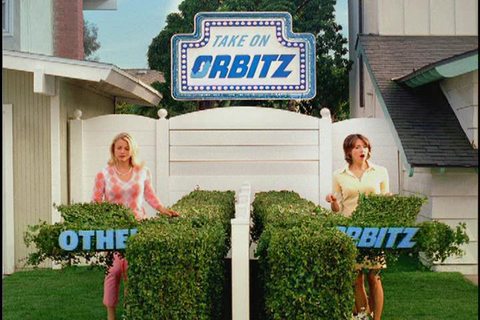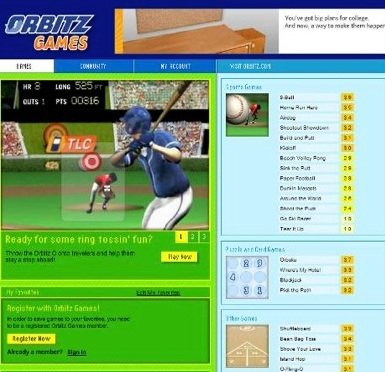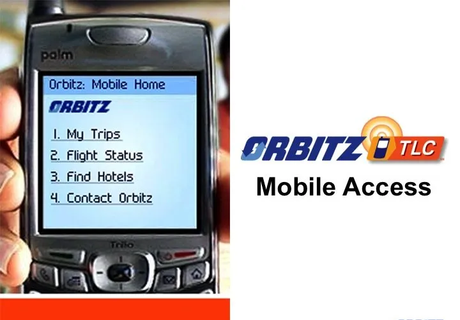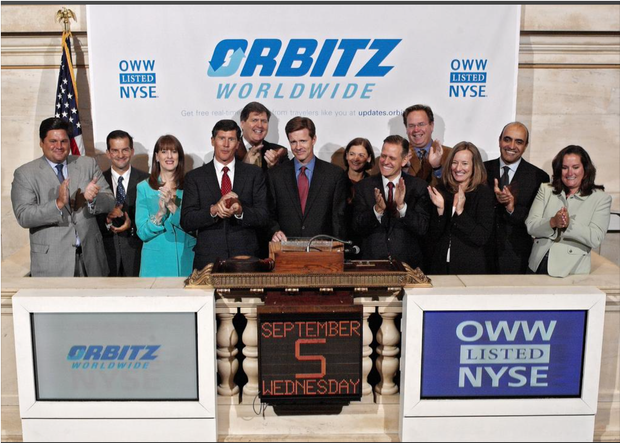Orbitz Worldwide
#3 US brand in online travel, built by the top airlines ... needs to sell more profitable hotels
To compete with the success of Expedia,
five major U.S. airlines launched Orbitz into the new online travel sector in 2001.
By 2005, online travel was booming.
Cendant began buying online travel agencies around the world ... including Orbitz.
They had not foreseen the hurdles:
- airline margins were negligible, profit lay in booking hotels and 'packages'
- their U.S. business now had 4 travel sites; only one was fully supported by media
- built to sell air tickets, the lead Orbitz platform had little credibility or functionality to compete for high-margin hotel sales vs. huge inventory from the top two: Expedia & Travelocity
2005: the trans4mation...
A Simple Brand Portfolio. SHARPLY TARGETED
The four online travel platforms in the US portfolio were impossible to brand effectively with current budgets.
Coming onboard mid-2005 ~ with most of my marketing spend already spent ~ the first step was to pause for a quick, simple but essential segmentation decision and opportunity assessment.
Two sites with greatest potential were identified for a 'full campaign' with integrated online & offline support. Each had a specific, lucrative customer target ~ with a different brand identity promise & persona ~ supported by different execution.
Travelers with MORE MONEY THAN TIME
In 2005, the early adopters ... already web-savvy ... were high end, frequent travelers.
Many were 'road warrior' business travelers. These were the heaviest users, and therefore the most profitable target. Orbitz held a substantial share for air travel, which we needed to retain & build out, capturing more margin.
Understanding their priorities was not just lip-service. Cost was secondary to their biggest goal: not just saving time, but gaining time. Their simple benefits were sharpened dramatically in an updated campaign.
Travelers with MORE TIME THAN MONEY
One of the many brands Cendant acquired was disliked within Orbitz ... because of its name.
BUT: Coming from McDonald's, the value of 'cheap' was crystal clear. Learning that we paid far less to Google for two words (our own brand name) which the newest segment driving growth already were typing into the search bar ... we had our #2 flanker brand to support with media.
Tapping into the new pride in being thrifty, our campaign was subtitled "Celebrating Cheap" with a new tagline that tapped the emotion of smart shopping. We chose print, and got critiqued (ahead of the torrent of sales) precisely since "no one in the category ever used print." Until this ...
2005: Orbitz had developed strong advantage by bringing massive e-marketing spend in-house. Yet offline media budgets ~ then most effective at repositioning the brand to meet these challenges ~ was severely limited.
Our top two online competitors were outspending us 9X and 5X, respectively.
imagination ... and innovation were required
to restage the brand & SELL minute-to-minute
"WHAT DO GAMES HAVE TO DO
WITH TRAVEL?
There was little unspent budget to deliver the new CEO's ambitious traffic goals in 2005.
Recognizing we wanted to build brand awareness even when people were not "in travel mode", a tiny fun tool Orbitz had created for ESPN was trans4med into a totally new marketing vehicle.
And a new guerilla tactic. For less than a radio spot cost.
In its 8-week introduction, the microsite delivered:
- 7MM total visits with 4.3MM uniques
- +637% new site registration goals
- 12 minutes average engagement time with our brand
- exceeding ambitious targets +80-700%
The New York Times dubbed it an innovative new marketing trend ... our board dubbed it 'effective'!
RESULTS?
Both sites were on the same platform.
Which means they pulled exactly the same inventory and prices.
Users told us the two sites were "COMPLETELY different".
And CheapTickets was cheaper.
Together, this brand portfolio strategy moved Orbitz into the #2 position,
overtaking Travelocity (then also with two brands, un-targeted) ... in just under one year.
2006: WHAT'S THE DIFFERENCE?
There were two HUGE category opportunities in 2006:
Rise above Price Wars → Become THE Value-Added Service Leader: Provide not just the best price, become the very best product at the best price.
- To drive home the message, a sub-brand was created to telegraph the value-added message everywhere.
- "Just a little "TLC": a promise, modest, and yet what customers were yearning for ... and still are today.
Seize MOBILE ... then, just on the horizon (anyone remember the Palm?):
- Only Orbitz had a great advantage: mobile alerts, which our best, most valuable customers loved.
- This became the foundation to expand the brand's value-added service reputation. Our strategy was to own a huge head start in what rapidly became a race for mobile dominance, not just in this largest e-commerce sector ... but again, everywhere.
One more MAJOR BUSINESS MANDATE:
The new 2006 marketing campaign needed to trans4m Orbitz authority & motivate travelers to purchase more lucrative hotels & packages.
Broadcast (then still most influential with key targets, across the board) had a clear role & responsibility in the mix. These launch ads, combined with an integrated, seamless online and offline campaign, changed the way travelers thought of the Orbitz brand ... improving margins by +58% in its first quarter, and sustaining significant growth beyond. It refocused the inherited campaign squarely on customer benefits that would deliver business goals. And it reinforced a playful brand persona: taking our customers, but not ourselves too seriously.
2007: ACCELERATING GROWTH
Orbitz actually did have an unheralded team of people in house, monitoring travel conditions full time.
So we "heralded" them!
Broadcasting Benefits
Long before 'social media' meant anything important in marketing, Orbitz began to capitalize on the social value of travel ... way ahead of any curve, or the high tech ability we have to execute this simple idea today. Just as context, our campaign launched just before most people even had heard of Twitter, which took off at the 2007 SXSW in Austin.
Think where the Orbitz brand could be now, if it had continued to "own" and build upon this very early lead...
My own learning curve grew exponentially, first taking the company private with Blackstone. Then in 2007, spinning Orbitz Worldwide public (with 7 international sites)
onto the New York Stock Exchange.
Altogether, a great ride...










